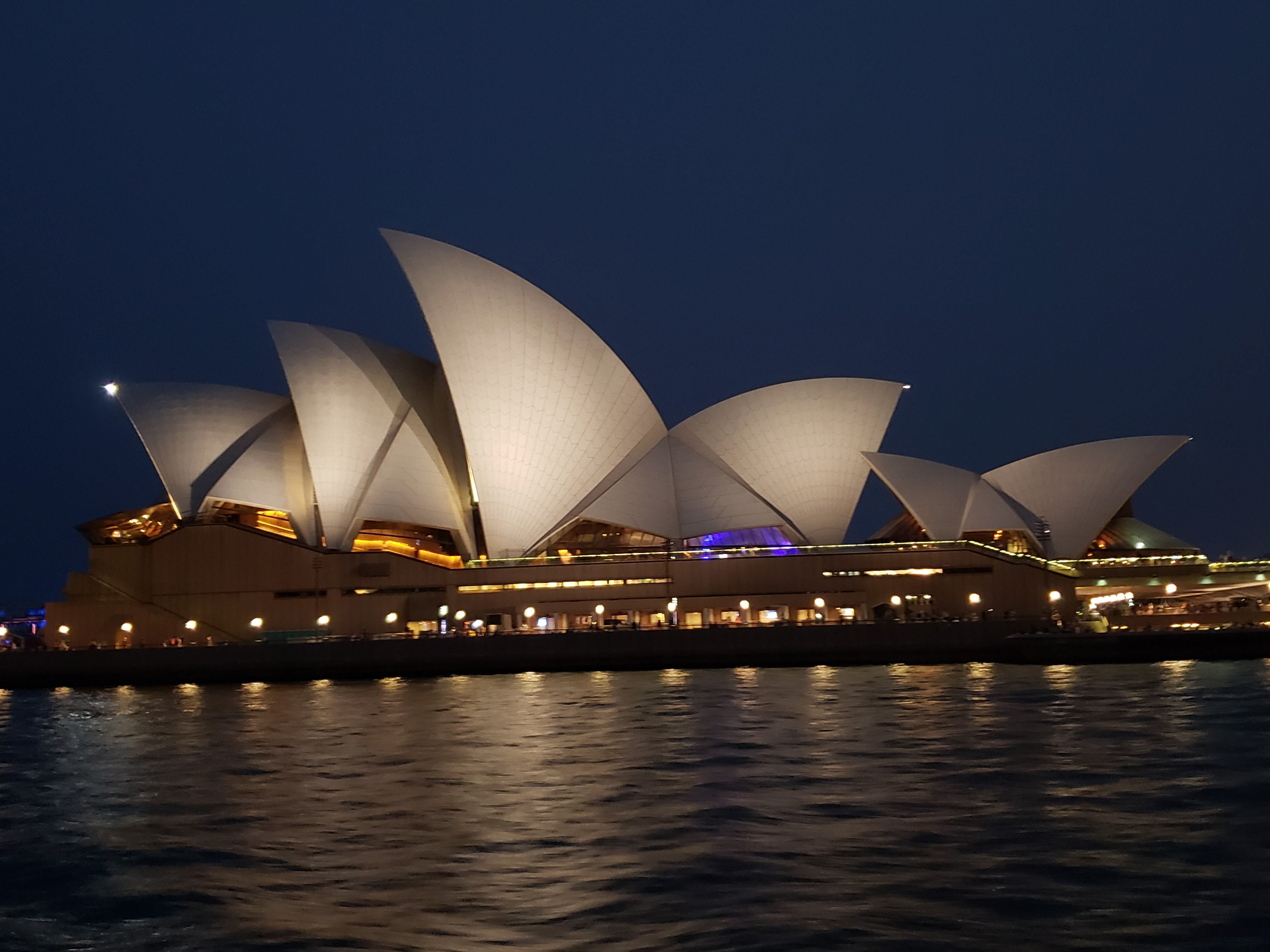
25 December 2019 to 11 January 2020
I arrived in Sydney, after spending another week back in Tokyo, on Christmas day. It was my first time on the continent and I was immediately struck by how friendly everyone was–even the security personnel at the airport.
In my neighborhood, Bondi, most shops were closed except for a local grocer. I stocked up on essentials and their home-baked Lebanese bread.
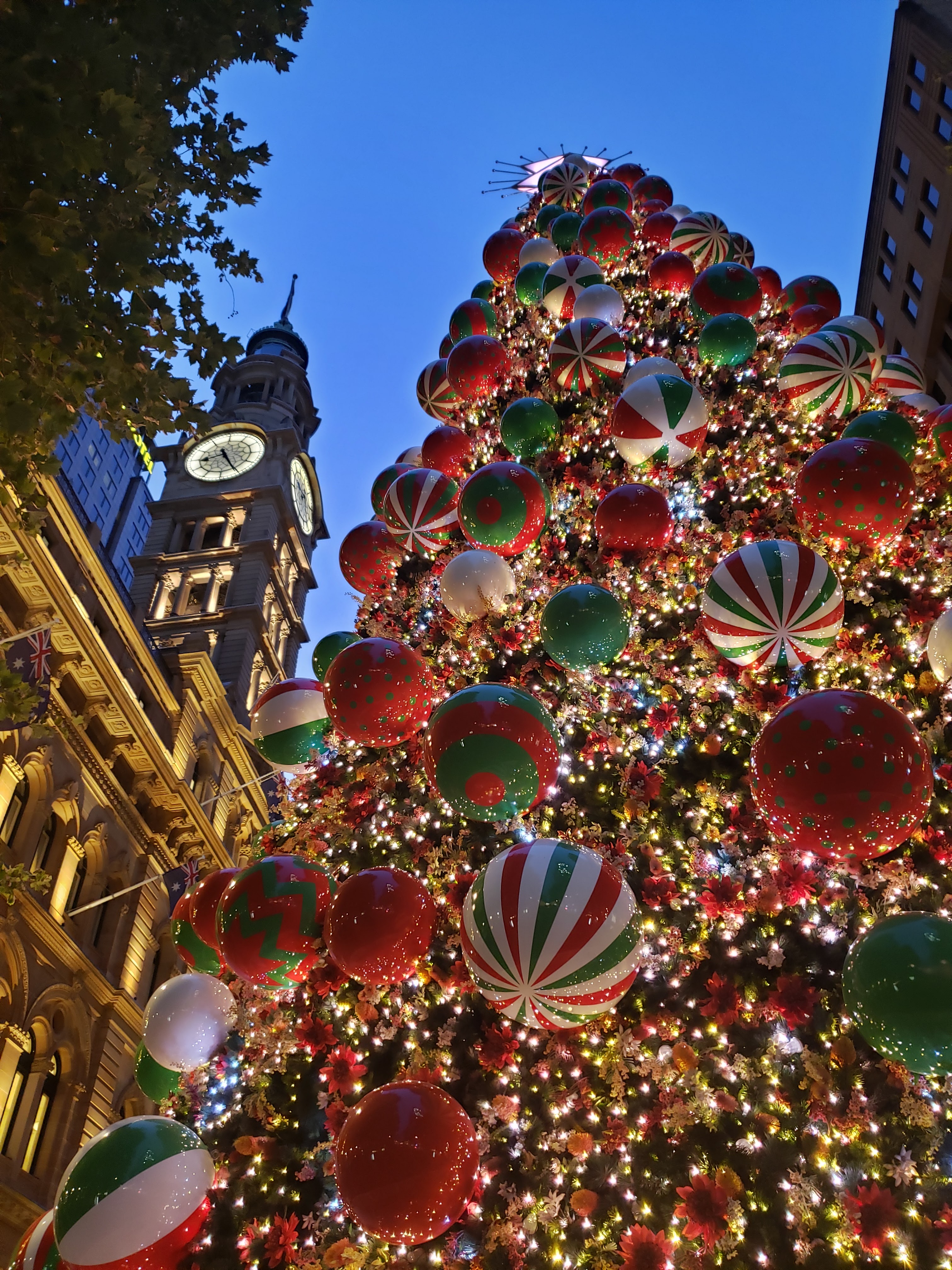
Unlike the cold December holidays I was accustomed to, the Southern Hemisphere offered a very different experience.
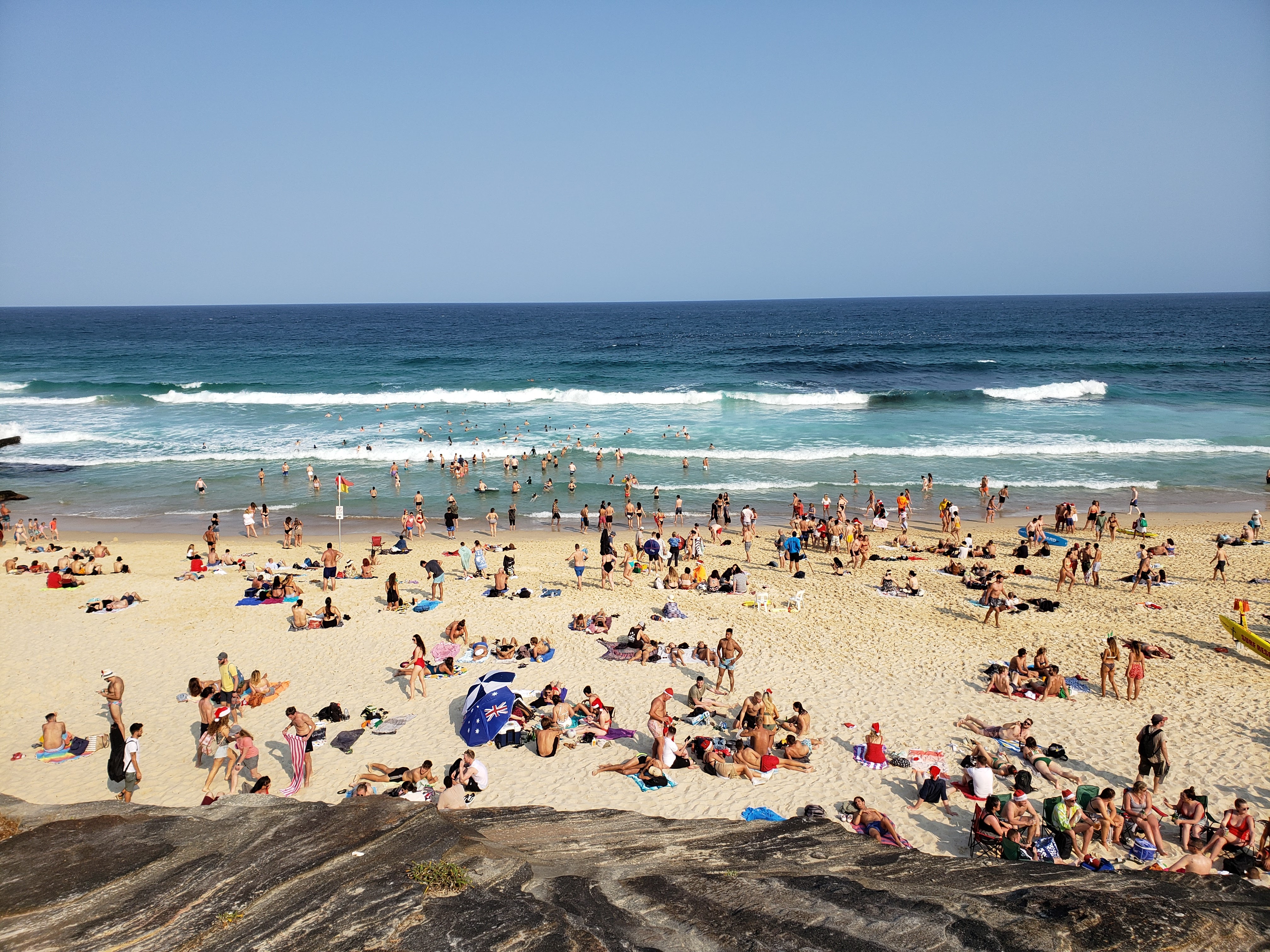

Seeking respite from the heat, I went for a swim in the Bondi Icebergs Pool, a short walk from where I was staying. The name was apt. I managed some laps before craving the warmth of the sun.
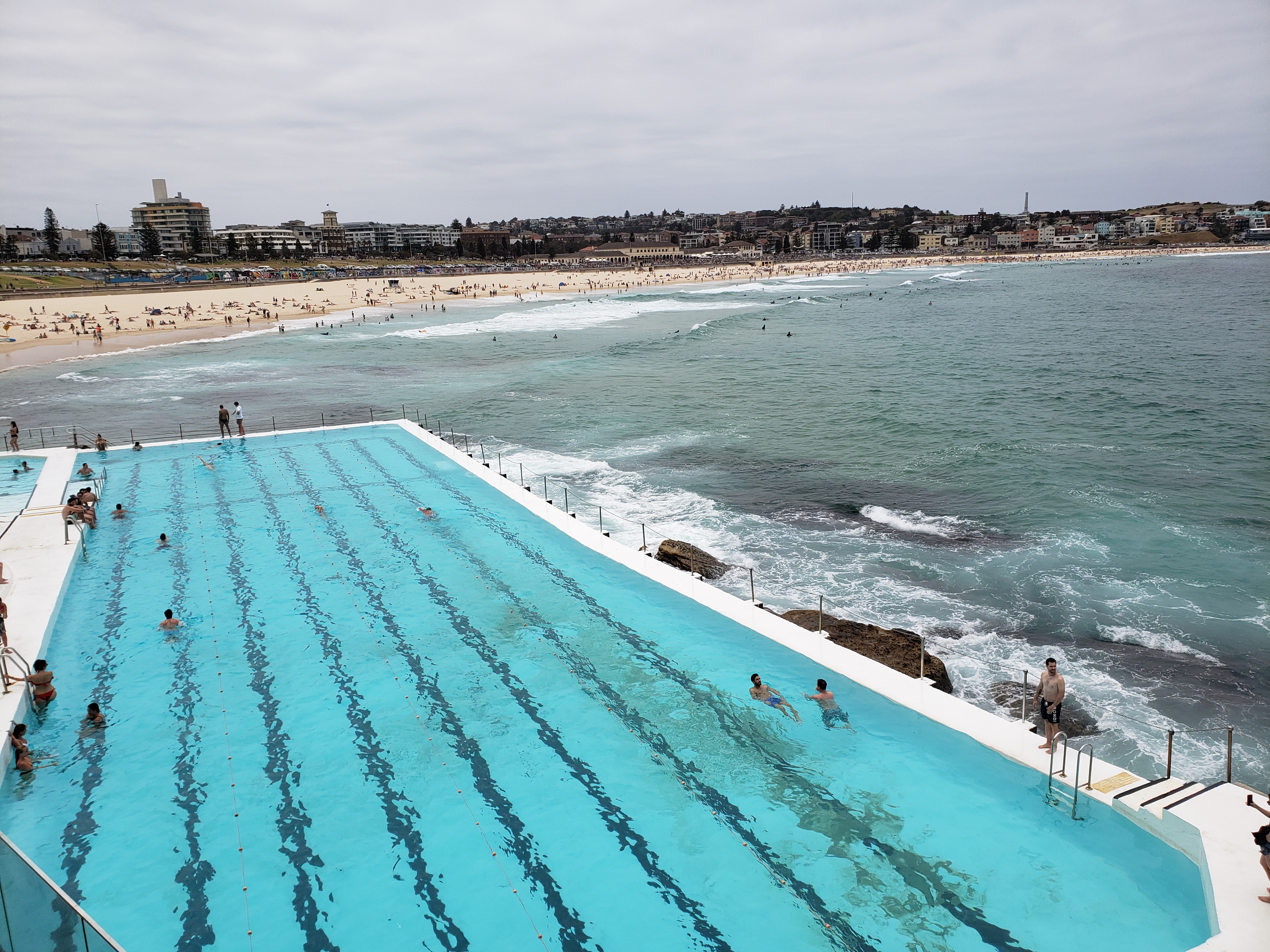
The majority of the town’s population seemed to be bare-chested men and bikini-topped women, most were muscular and tattooed. Strolling along or sitting at cafes made eavesdropping unavoidable–after months in Japan, it seemed my ears were especially attuned to the English language. The gym was a popular subject of conversation. I wasn’t surprised.
I sought out one of my favorite urban destinations and strolled through the Royal Botanic Garden. It was a perfect place to wander and get lost, more figuratively than literally.
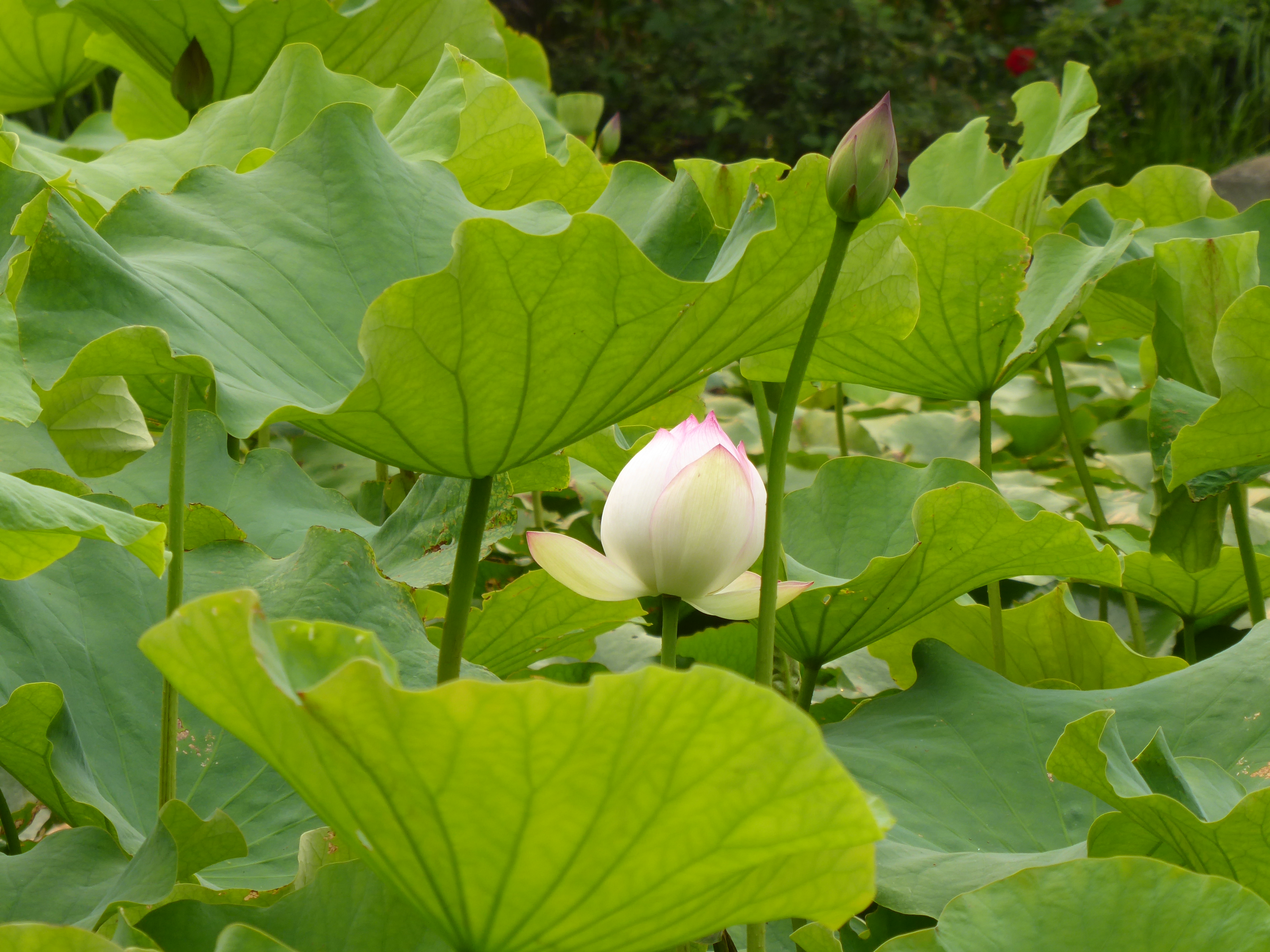
The huge trees generously provided shade, flowers adorned the grounds with vibrant colors, and the ponds teemed with entertaining birds of unfamiliar species.
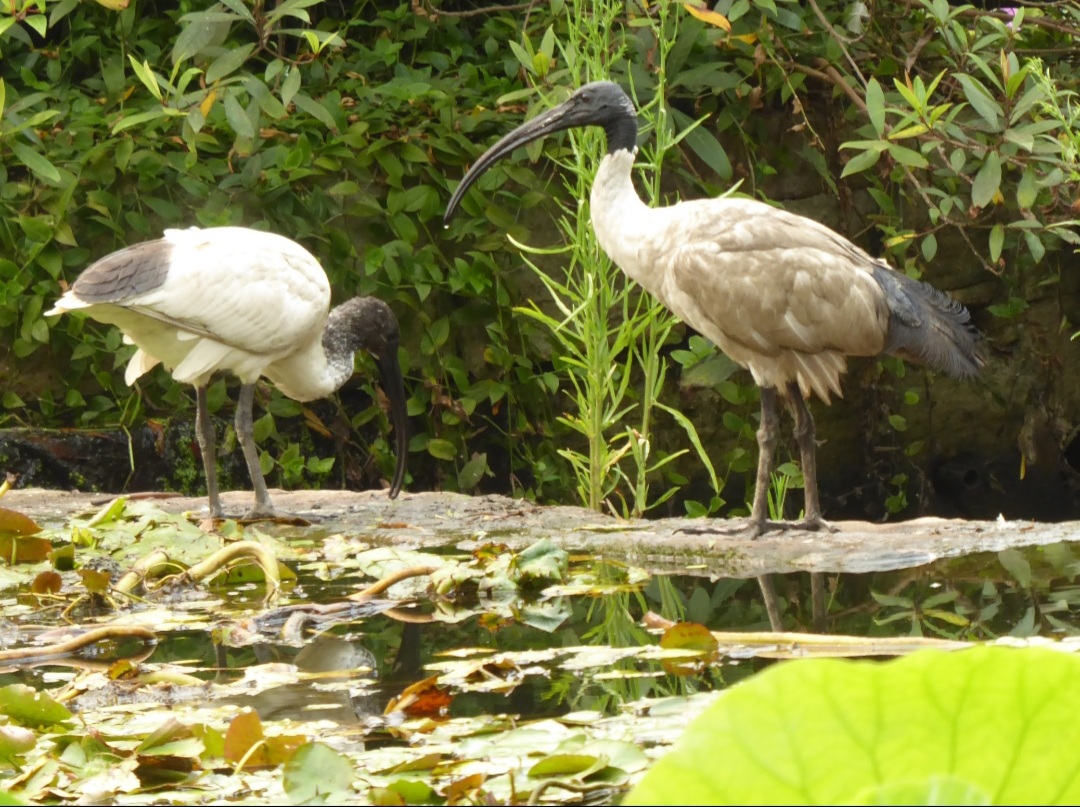
The extensive ferry system offered transportation to undiscovered places, refreshing breezes, and scenic voyages. In Manly, a suburb, I wandered into an excellent pizzeria and got some great local tips from the couple sitting next to me. I spent the next few days following their suggestions. This included the Vaucluse House, a 19th-century mansion surrounded by its original gardens, wooded grounds, and beautiful outdoor cafe. They served a decadent “high tea”, but I opted for a lunch of fresh vegetables from their garden, fruit, and an array of cheese and spreads instead. No regrets, it was delicious.
Getting around Sydney was easy except for the unexpected and very steep hills, particularly near the coast. The buses accepted direct payment by credit card. I rarely found navigating public transportation elsewhere as straight forward. And of course the common language, for the most part, helped. (However, asking in a restaurant for a napkin, which in Australia, is a diaper can get you a funny look.)
While people were celebrating the holidays, it was impossible to ignore the ever increasing forest fires raging in many parts of the country. The toll, both physical and emotional, was devastating. The smoke blew toward Sydney and its normally crystalline blue sky wore an eerie orange hue.
Cancelling the New Year’s celebration was proposed, but whether the decision was swayed because of finances or morale it went ahead as scheduled. I bought a ticket to see the new year unfold in the harbor.
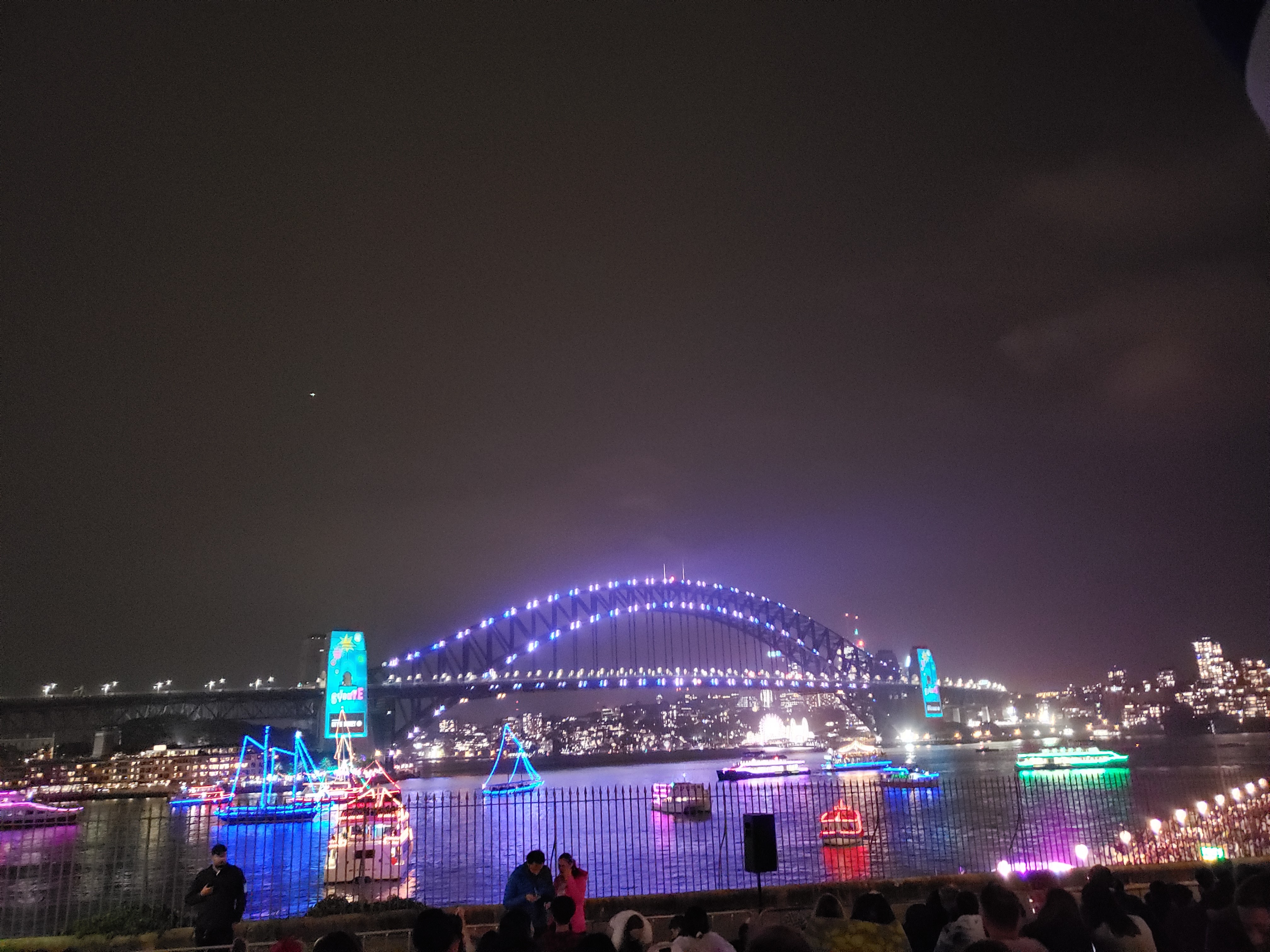
The spectacle did not disappoint.
The Harbor Hoopla was a family-friendly event with old-fashioned games and activities. I decided to have my palm read. I sat down in front of a woman wearing numerous bangles and a long dress loosely draped on her ample body. She took my hand in hers and seriously examined it. I realised my foreign accent, appearance, and callous-free hand already spoke volumes. After a moment she told me with an appropriate aire of mystery that I would be “travelling north.” Since most destinations on the entire planet are north of Sydney, her demonstration of clairvoyance was less than astounding, but the moment was nonetheless entertaining (I’ll note here that in the weeks ahead I ended up, despite the odds, traveling south, and then south again).
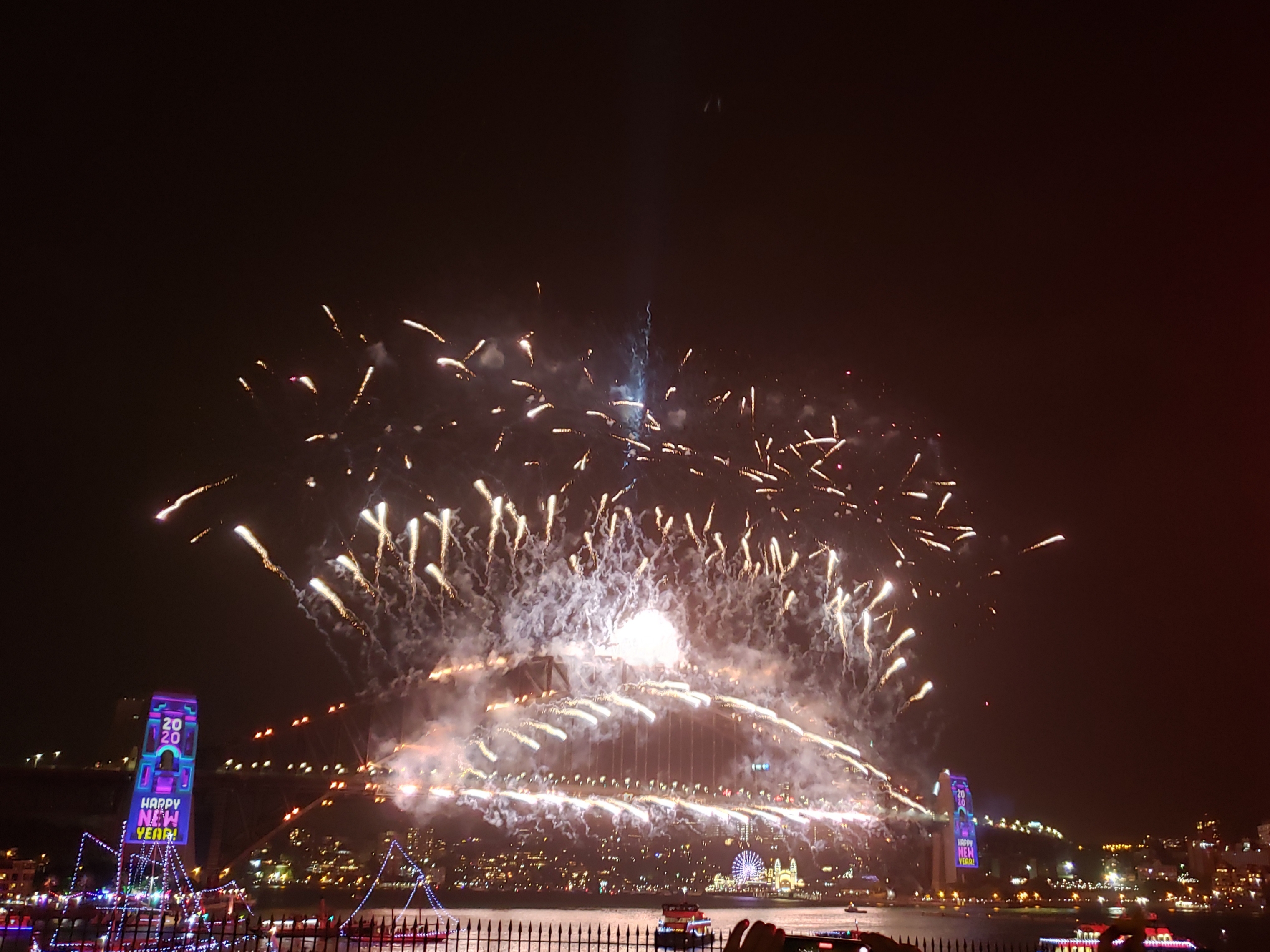
The night was festive. I enjoyed various conversations and as always at midnight made a wish for the well-being of my loved ones. And peace on earth (It can’t hurt).
2020 did not begin with promise. The wildfires continued to rage. I regrettably cancelled traveling to Kangaroo Island and the Blue Mountains. Both were to be highlights of my trip. But, like so many others, I compensated the loss of their revenue with donations.
I’d been in Sydney a week and originally planned on staying two however, the smoke from the wildfires continued to travel toward the city. The summer heat made the air particularly oppressive. I cut my time short and went to Melbourne.
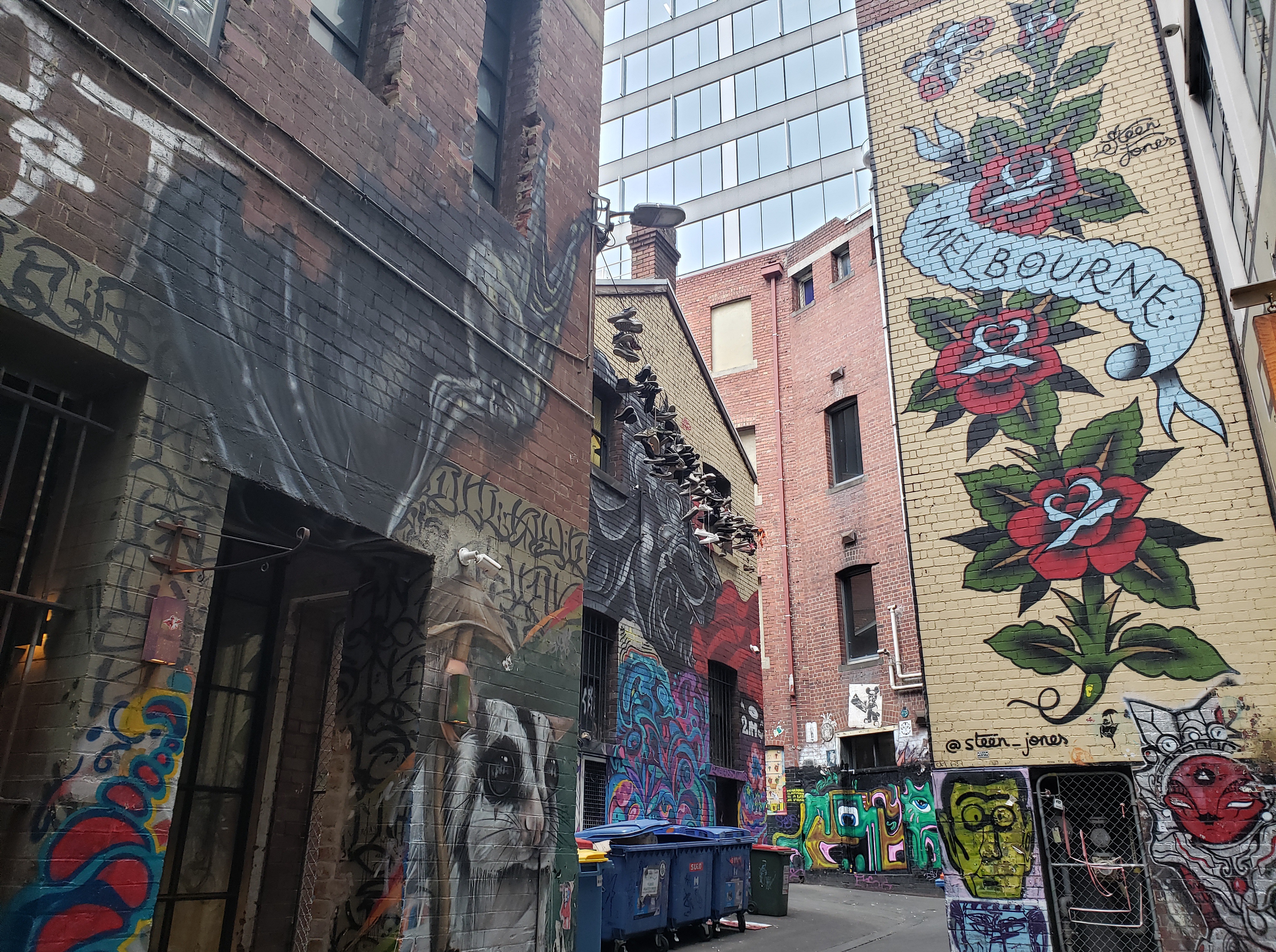
Perhaps those in the know will completely disagree, but I felt that Sydney was Australia’s equivalent to Los Angeles (I was only there once and it was a short visit) and Melbourne, New York. The buffed-up people in skimpy beachwear were noticeably absent and in their place were fully clothed compatriots–it was considerably cooler and wetter–with physiques of all varieties who showed a penchant for books rather than gym bags. At least this is the impression that lingers in my mind.
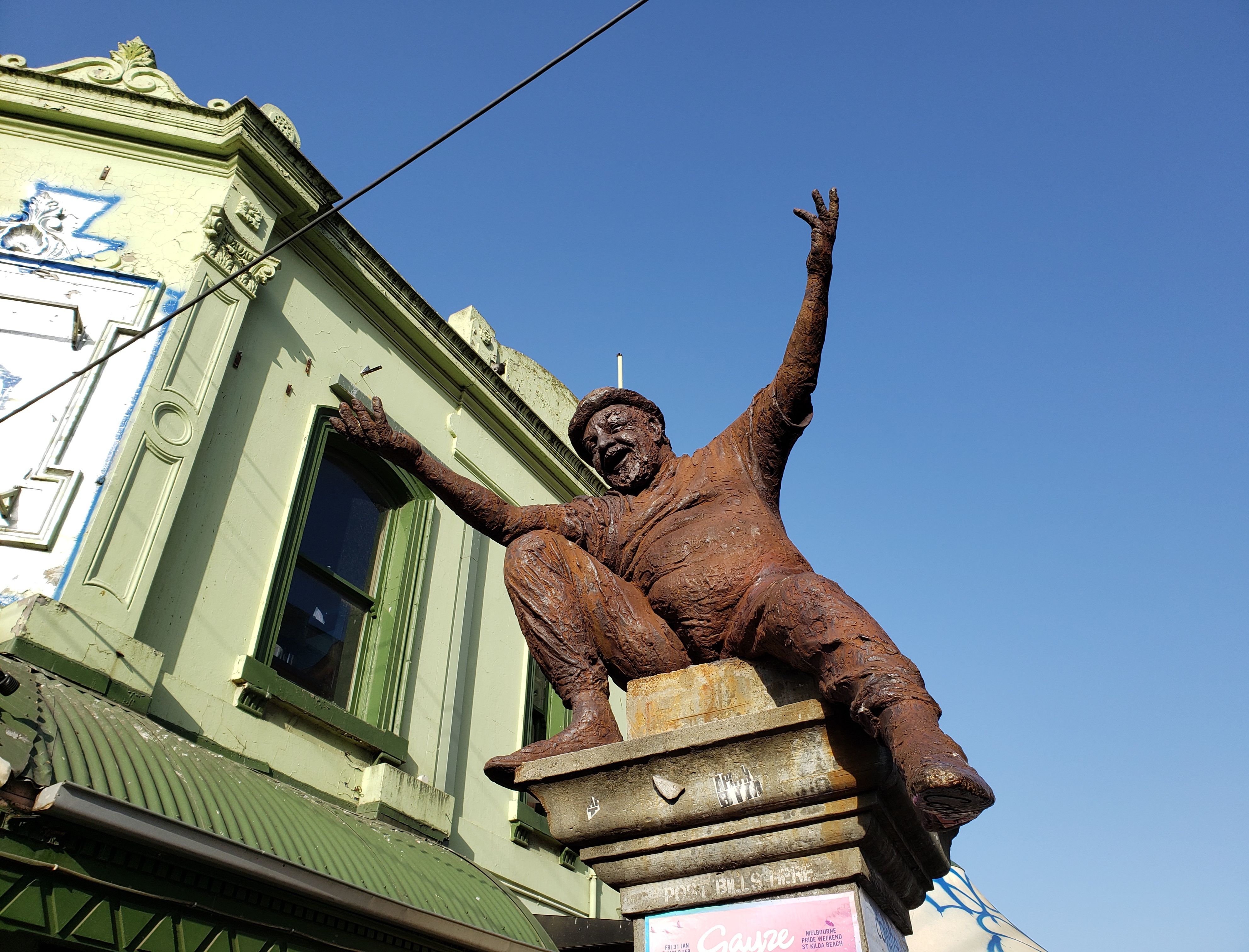
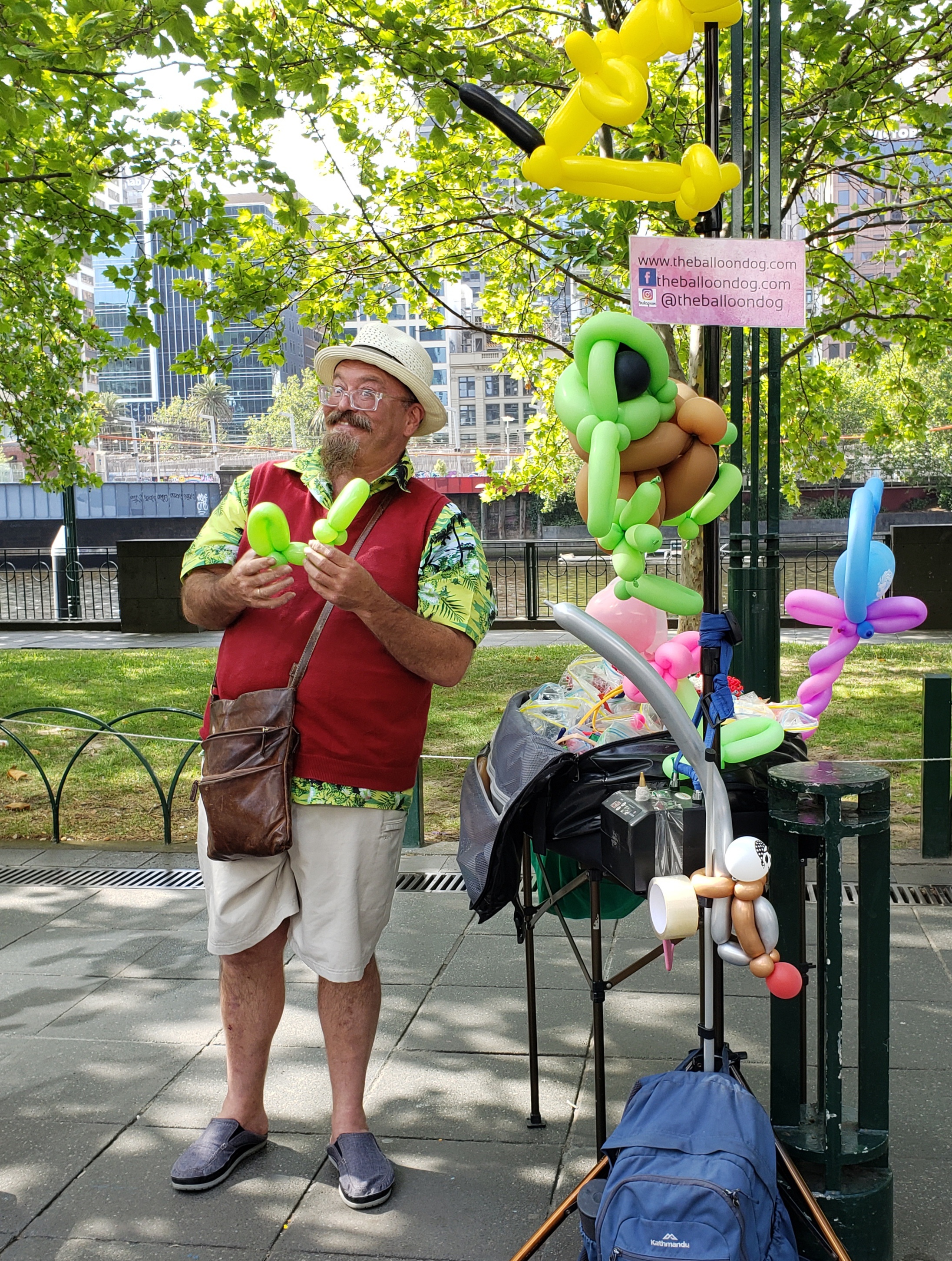

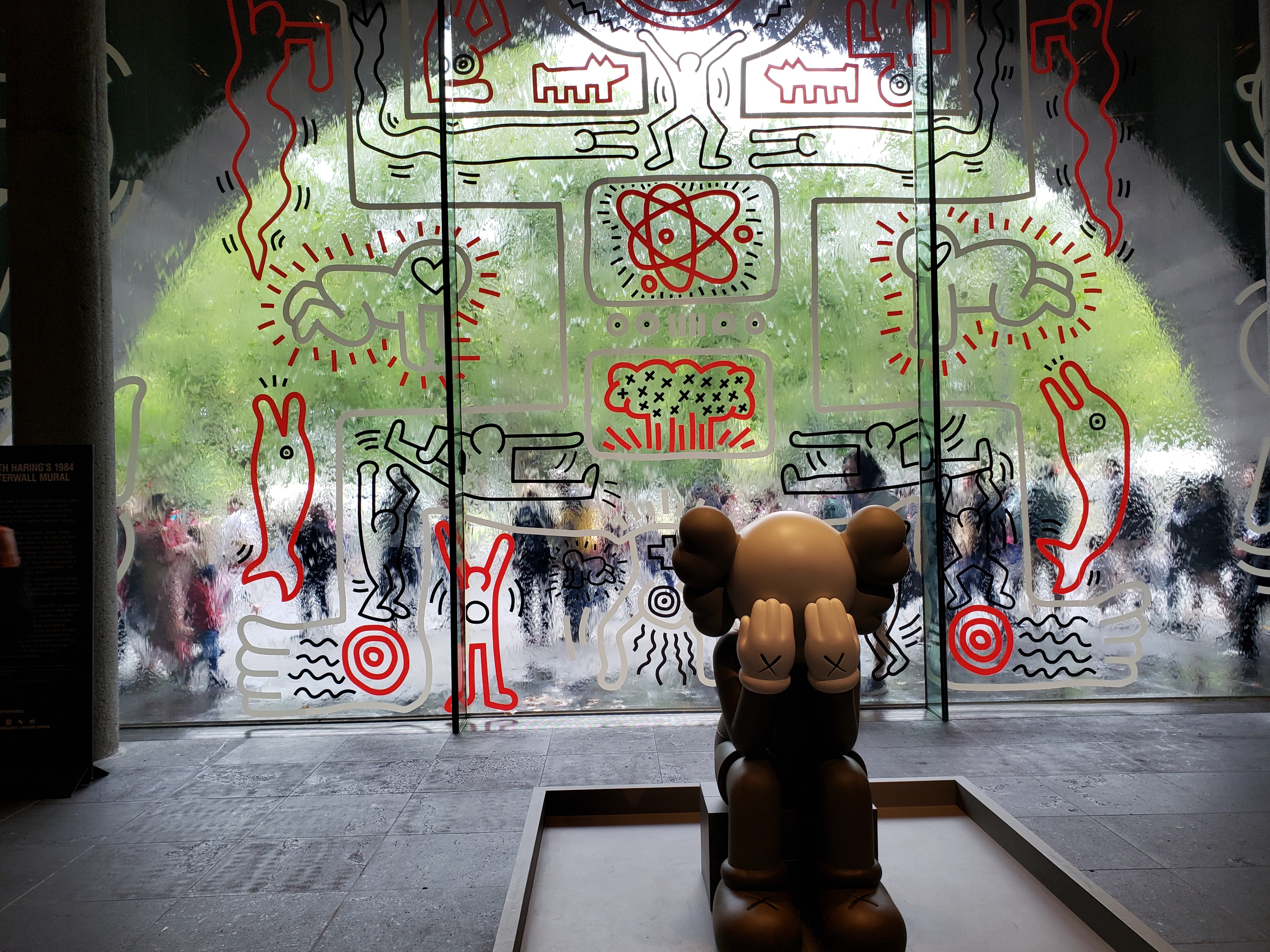
I would gladly return to Melbourne for a longer stay.
With my travel plans upended, I investigated my options.
I’m often drawn to places merely by their name. Tasmania intrigued me since I’d first heard of it as a kid watching the Looney Tunes character on Saturday mornings. It also offered cooler climes than most of Australia and notable natural beauty. And I’d read an article in the New Yorker back in 2013 about a fascinating, if controversial/eccentric, multi-millionaire Tasmanian gambler, David Walsh who founded MONA (the Museum of Old and New Art). It sounded intriguing and added to the appeal.
I flew into Hobart, Tasmania’s capital and rented an apartment for five nights. It came with a mountain view of the Wellington Range in the distance and a robust tree filled with songbirds just outside my window.
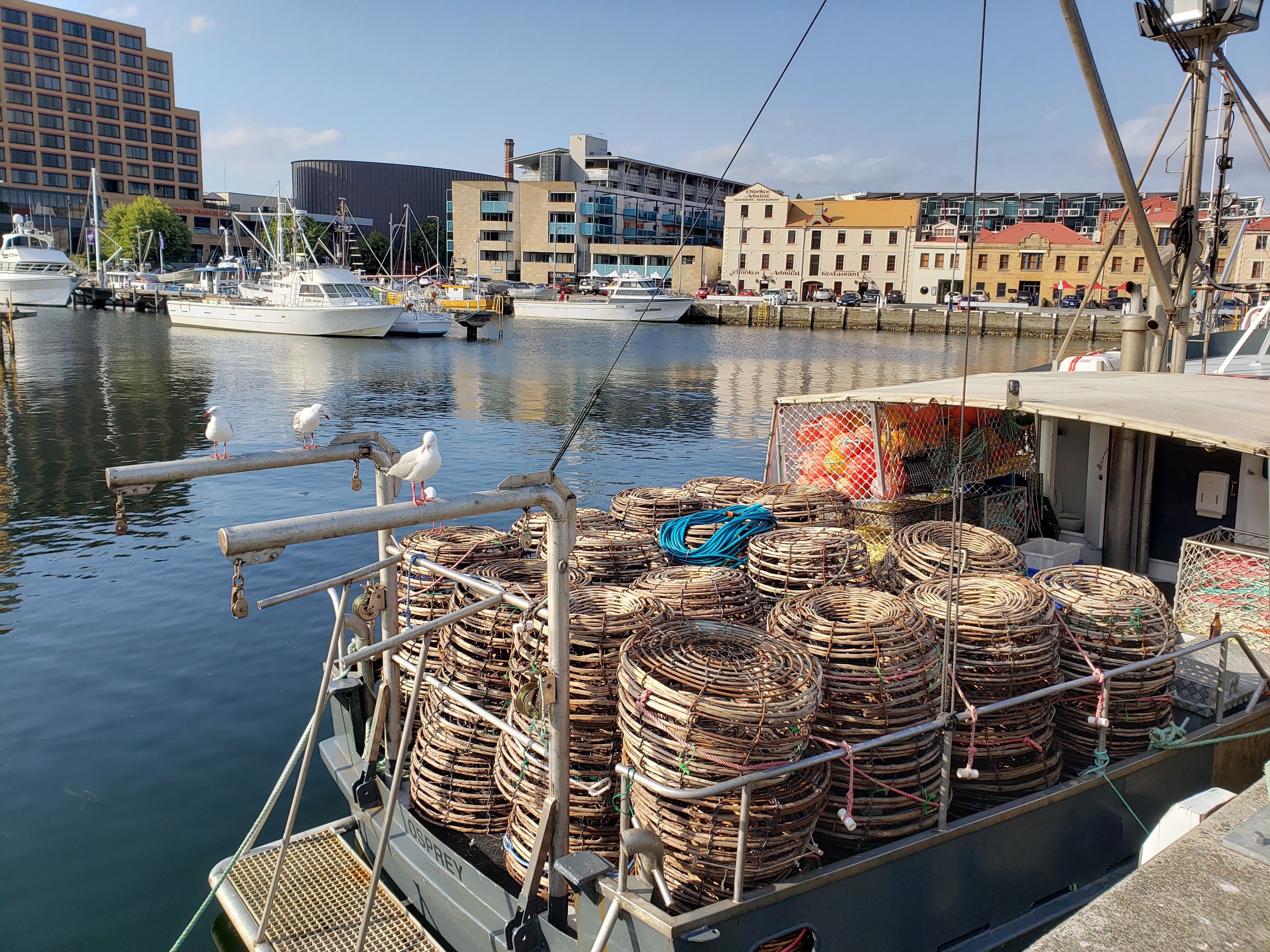
A stroll to the downtown area brought me to the door of the Tasmanian Aboriginal Center. Inside I met Luana who graciously offered me, upon request, a brief overview of the island and summary of its history.
Not unlike elsewhere, the indigenous population was decimated by gross injustice and disease brought by the Europeans. The brutalities suffered by the women explained Luana’s pale skin.
I was introduced to T, a beautiful volunteer in her early twenties. We took a walk down to the port, as she pushed her bike beside her, stopping along the way to admire the flowers. We quickly opened up, as one can with a stranger, and spoke of family, gratitude, travel, and how she’d managed to find a better path than the one she’d been on–veering towards suicide . She was now working with teenagers at the center. Her positive philosophy, precocious wisdom, and palpable fortitude was undoubtedly an extraordinary asset to the community.
I started making plans for a road trip around Tasmania and did some exploring closer to home before I set off.
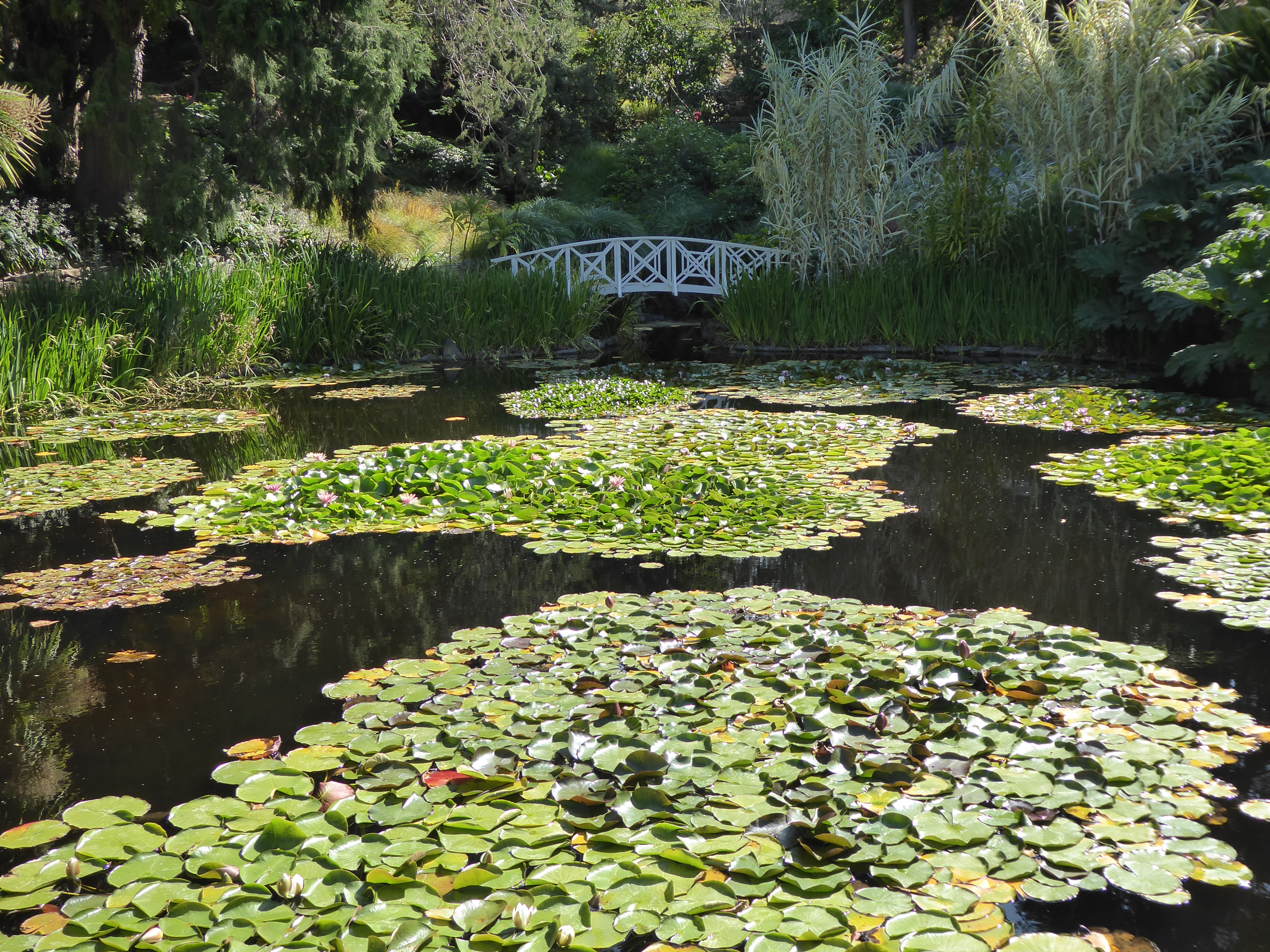
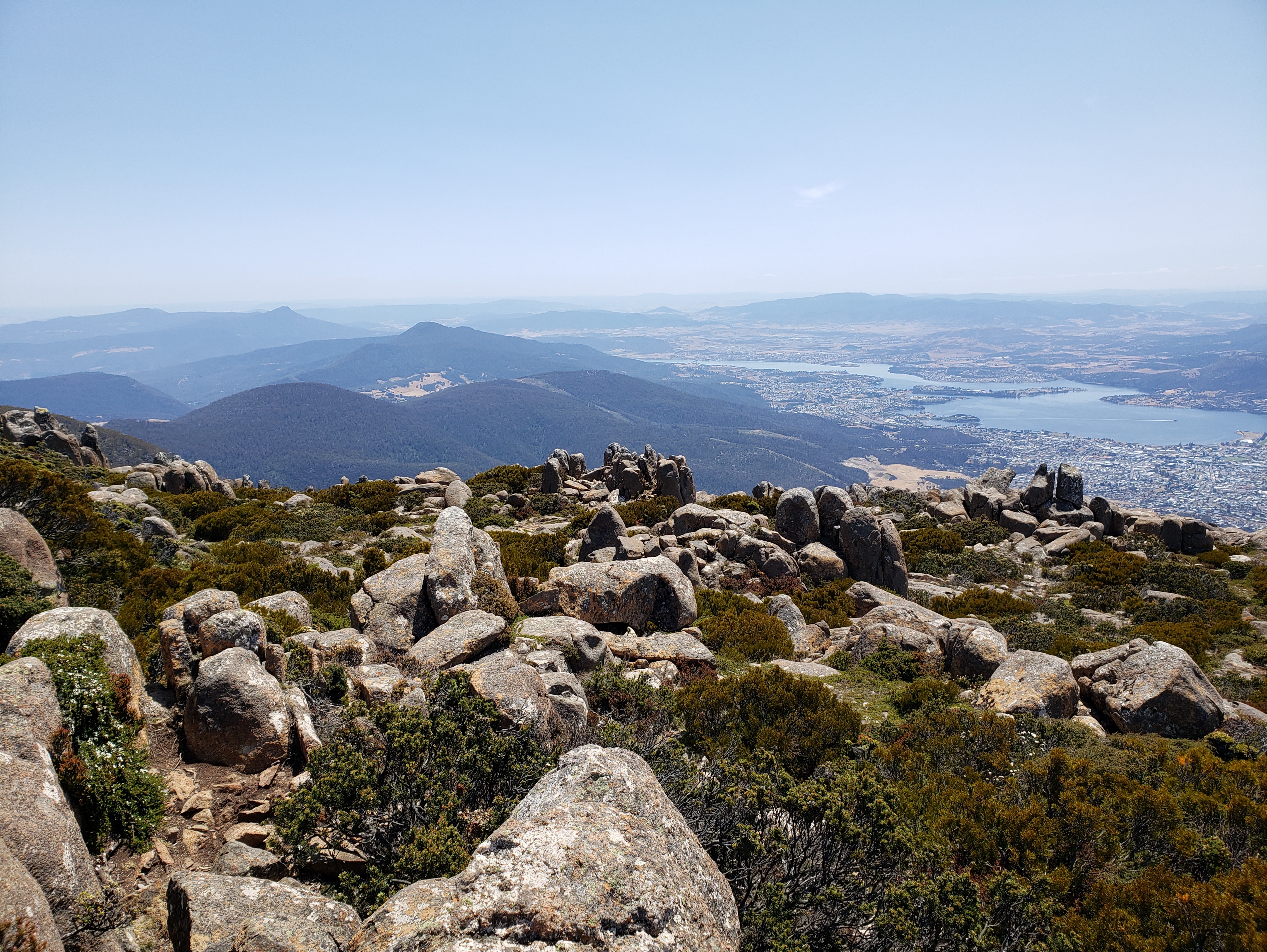
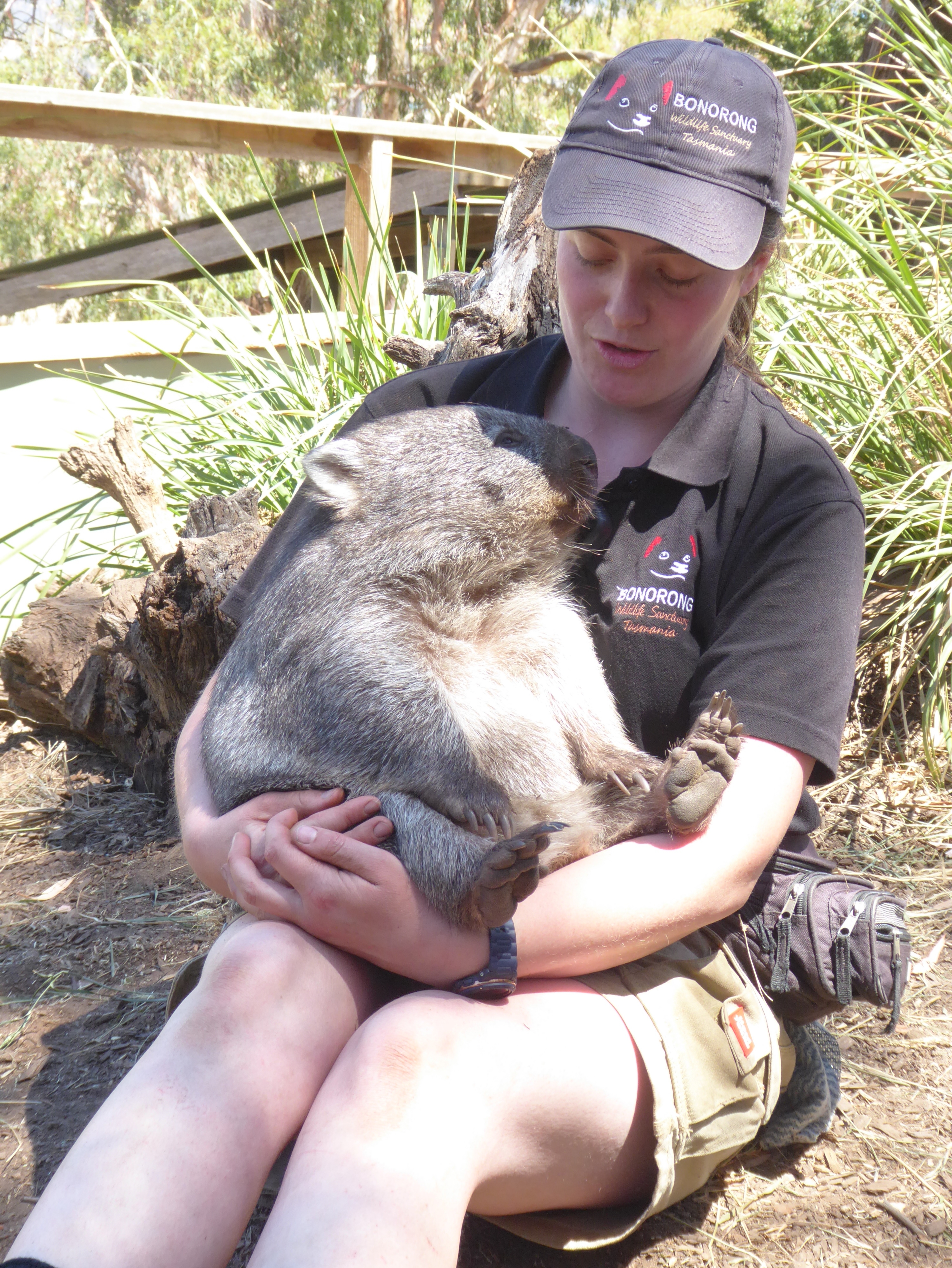
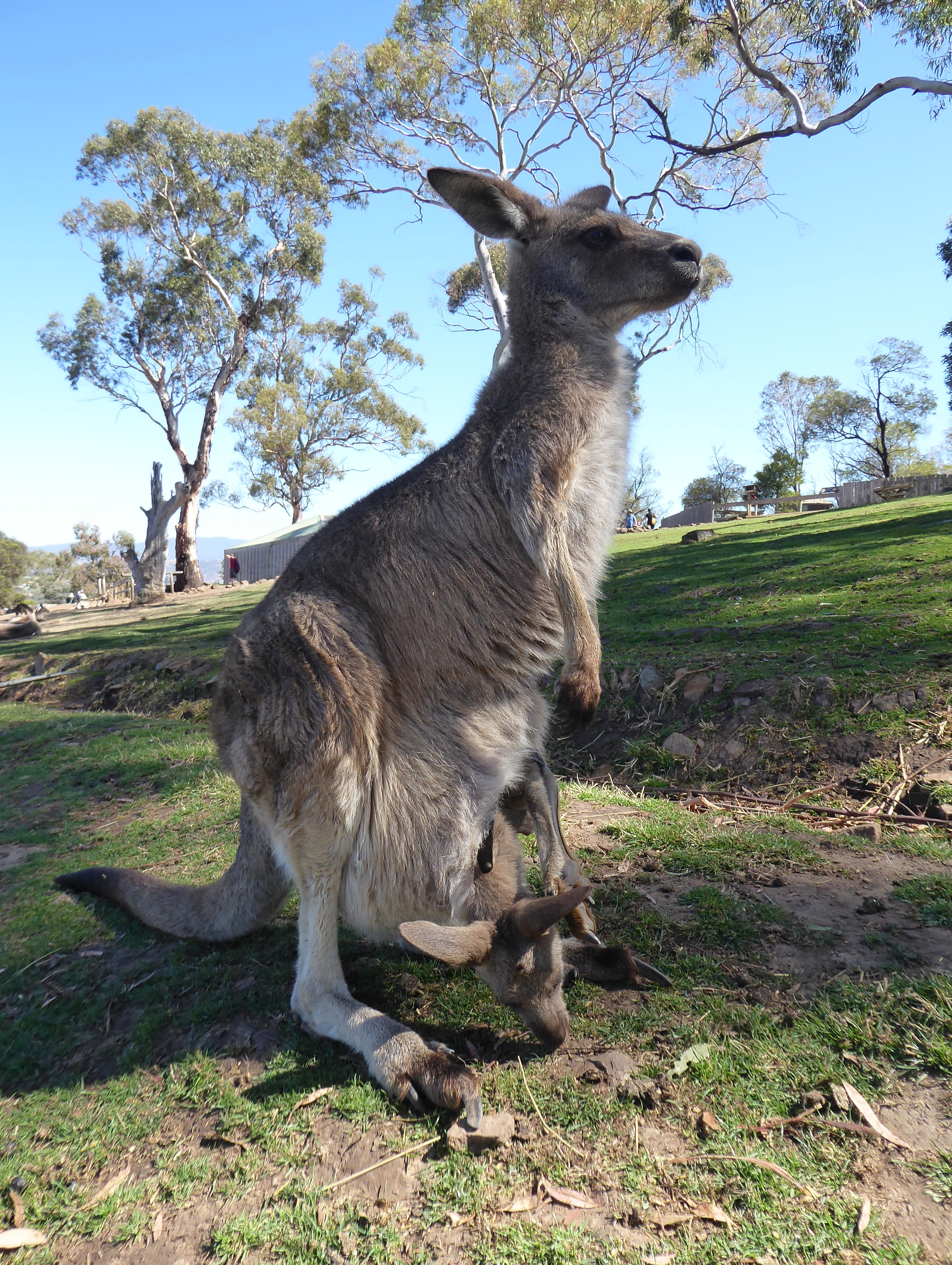
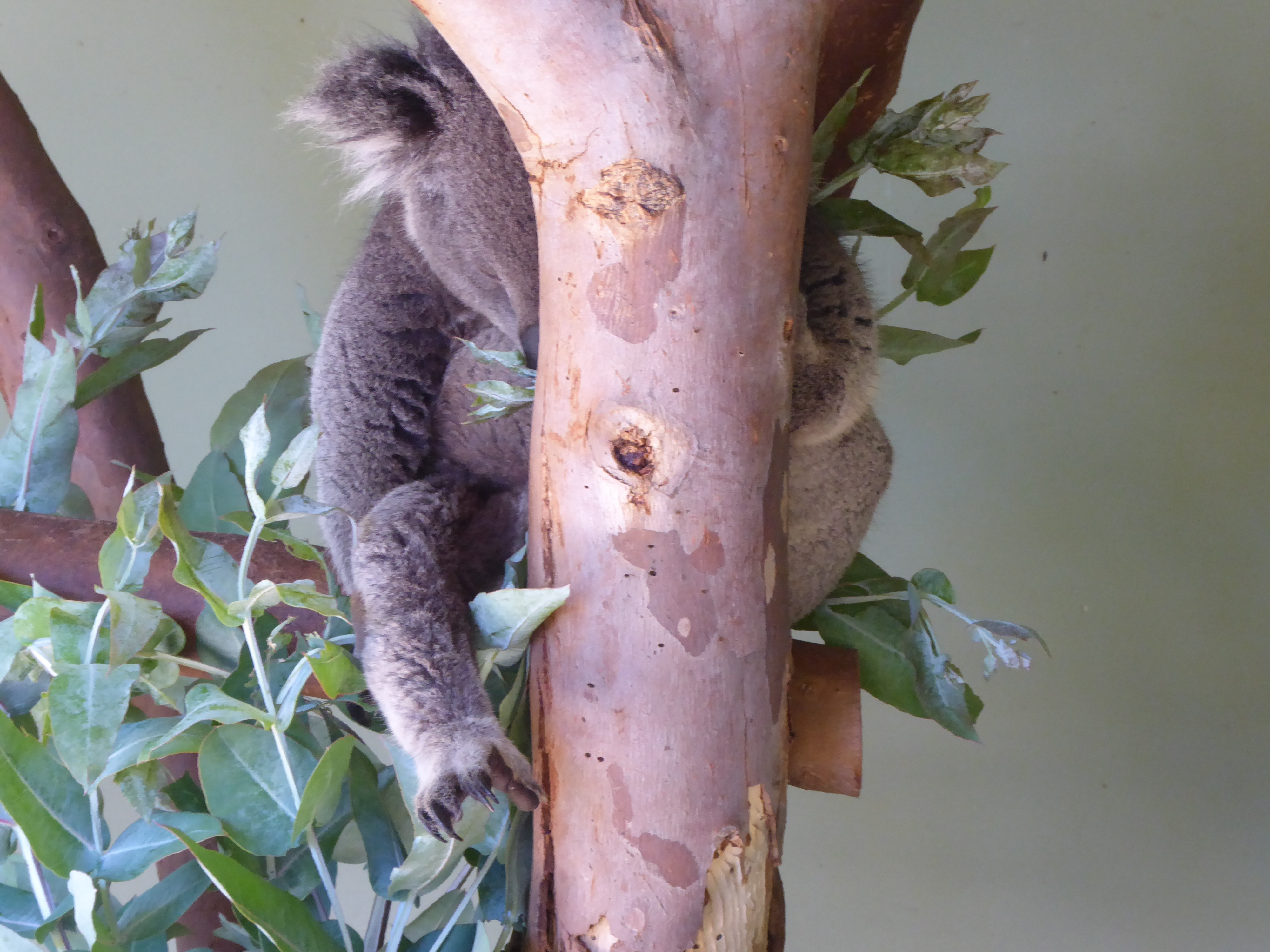
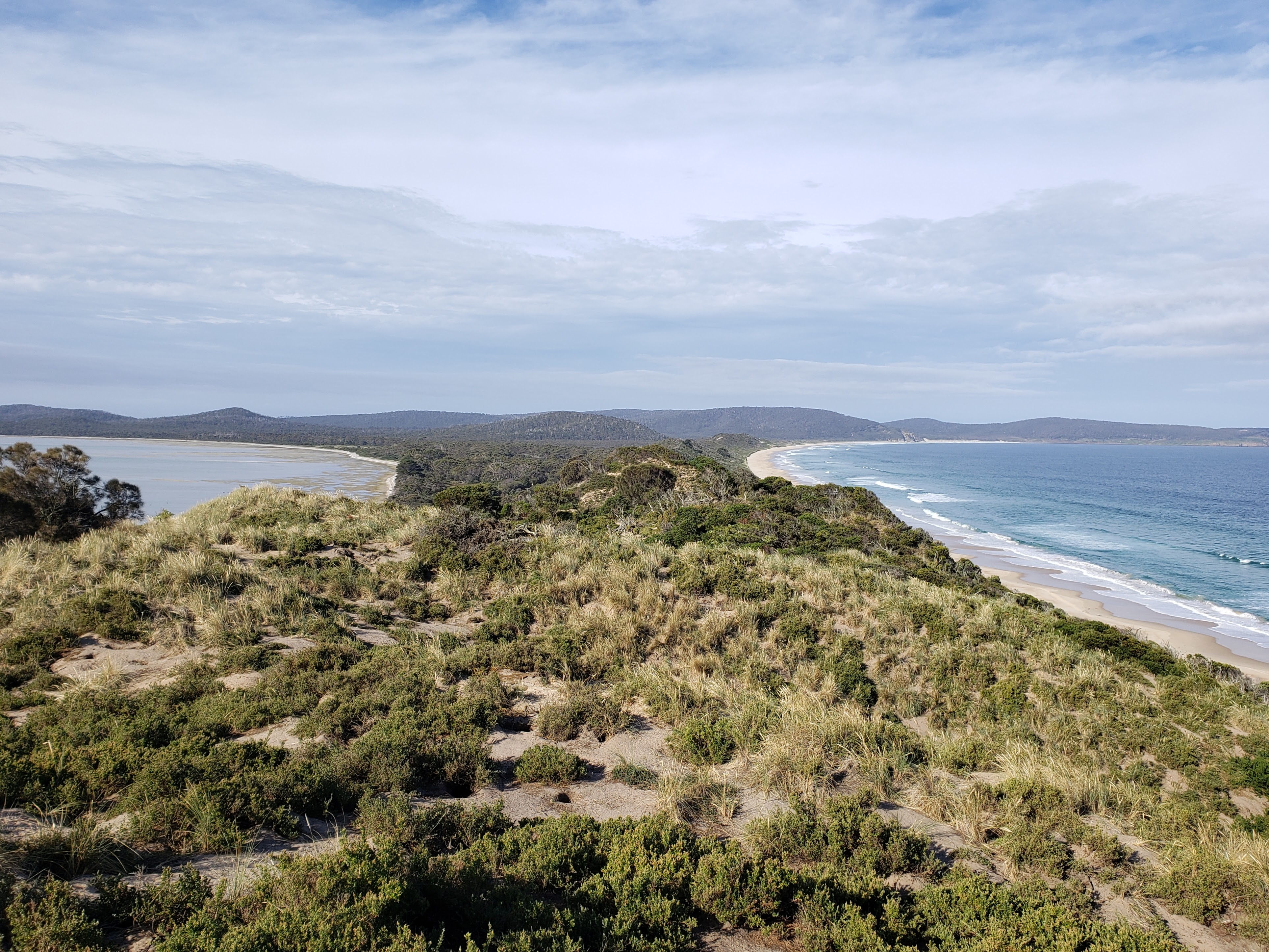
I saved my visit to MONA for my final day in Hobart. Although access to the museum is possible by car, I thought the ferry would be nicer.

Most of the museum is underground. After paying admission, Tasmanian residents and anyone under 18 enter for free, I was given an i Pod to help me navigate the galleries, get on a virtual line for the more popular exhibitions, and obtain information on the artwork–there isn’t any posted on the walls.
I found the technology off-putting and the dark galleries gloomy (probably intentional), but managed to adjust to both while exploring the immense space, varied works, and exhibitions (Testosterone seemed to be oozing from the walls).
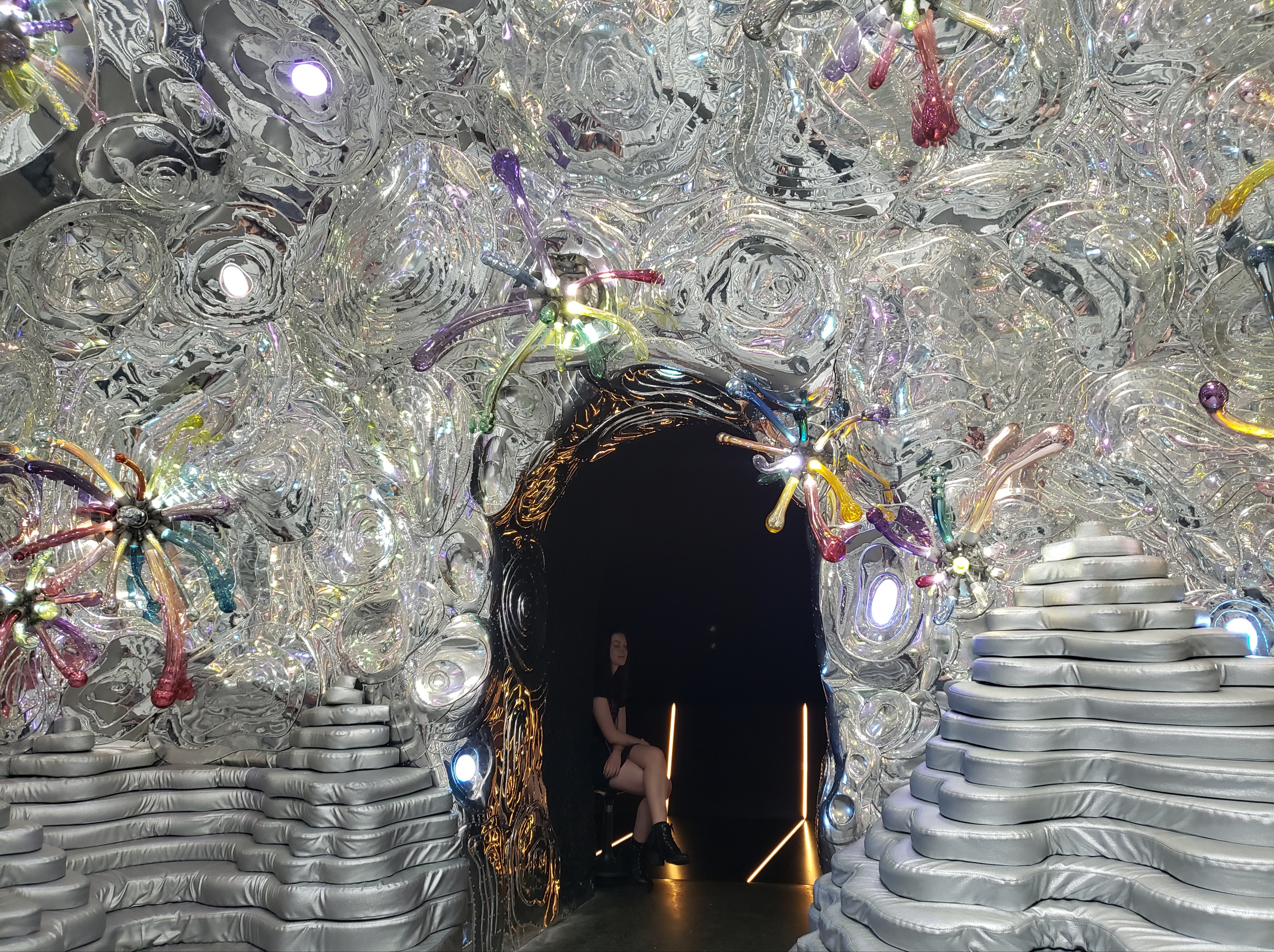
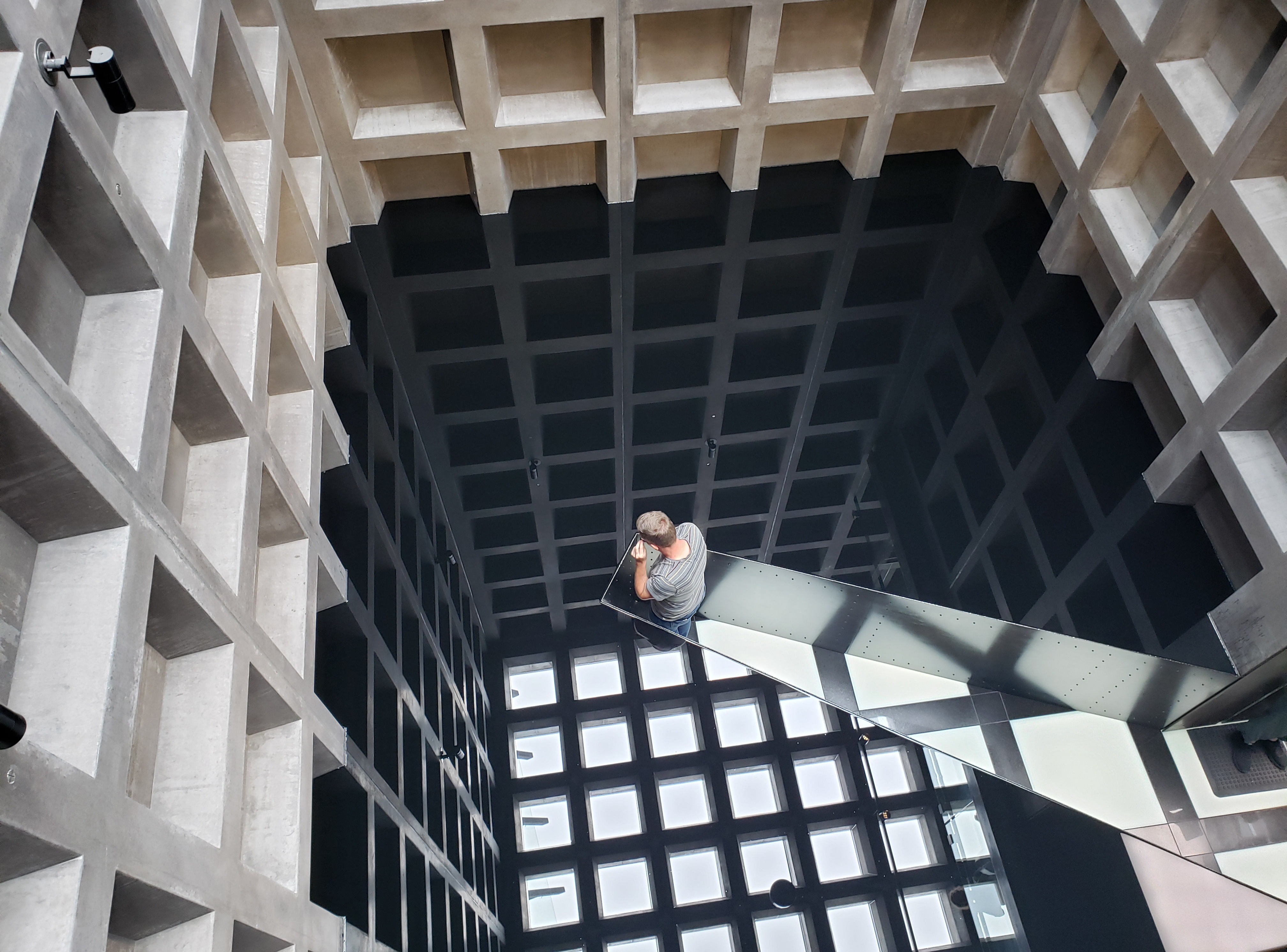
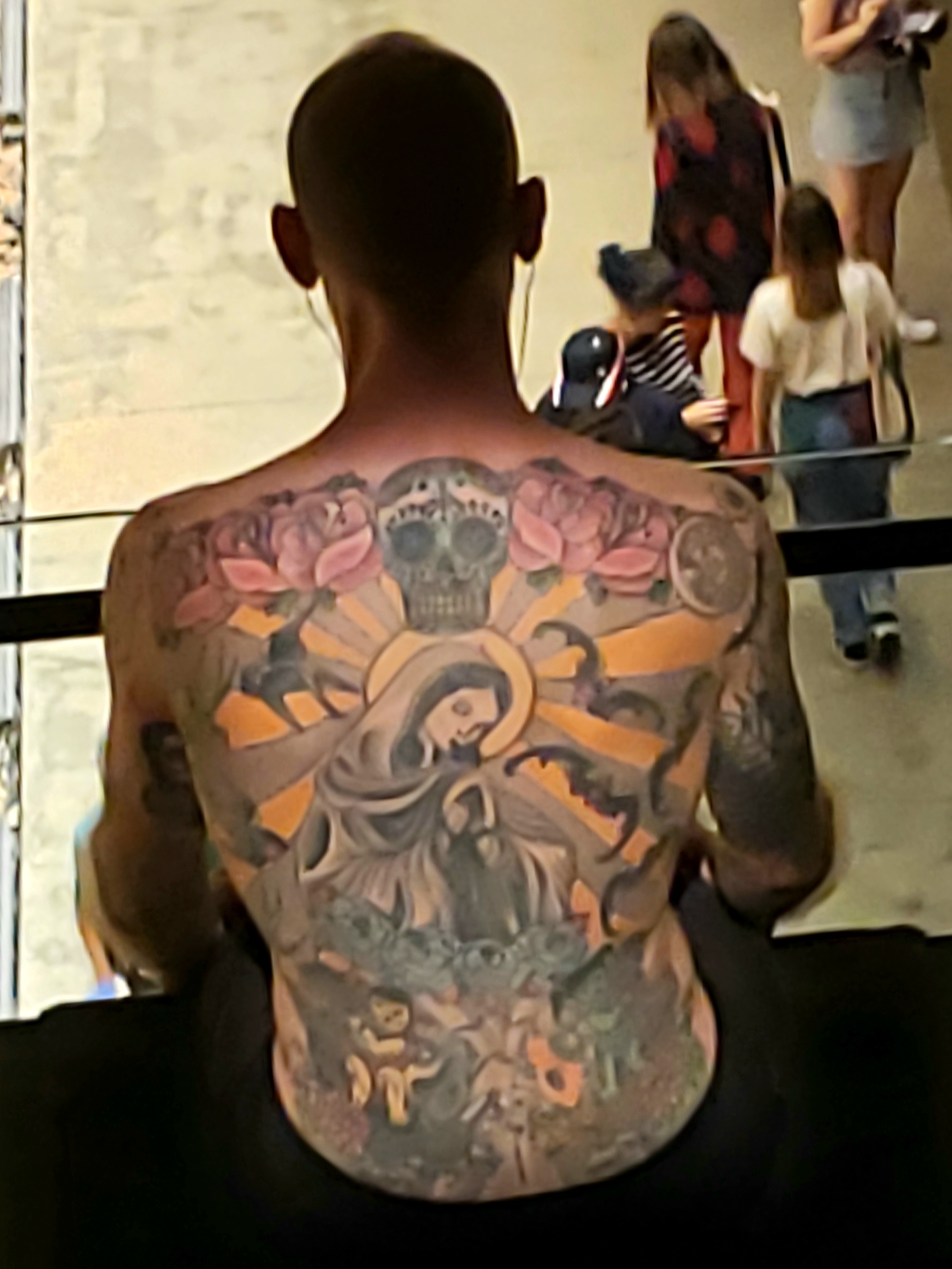
I took a break for lunch, happy to get outside, and wandered the grounds which lies within Walsh’s Moorila winery. There are plenty of sculptures and structures to marvel at. Continuing my visit with the works of James Turrel, his familiar works were appreciated anew.
Several of the special exhibitions required the signing of a waiver, including one of Turrell’s latest creations. It stated that one did not suffer from epilepsy, claustrophobia, and was not drunk or on drugs. Dante’s The Divine Comedy a la Alfredo Jaar required wearing a harness attached to a sturdy bar so one did not descend into, well, hell of course. The floor did open up to a whirling, turbulent abyss, but unless you lied about being under the influence, and you had super-human strength, you had nothing to fear.
Despite all the works that were meant to dazzle and amaze, I was most impressed with a fifteen-minute documentary by Yuri Ancarani called “Il Capo” filmed in an Italian quarry. There is no dialogue, voice-over, or music. There are no special effects and no waiver was needed to watch it. One hears and sees heavy loaders used to cut and move mammoth slabs of marble in the Apuan Alps. The camera, often in close-up, follows the hands of one man “il capo.” He is in essence the eyes and conductor, if not the driver, of these mighty machines. His subtle movements, like that of a brilliant maestro coaxing an orchestra, are poetic, exquisitely delicate, and profoundly beautiful.
The suggested visiting time at MONA is about three hours. I’d arrived when the museum opened and found myself running, seven hours later, to catch the last ferry back before closing.
to be continued…